Click on images to enlarge
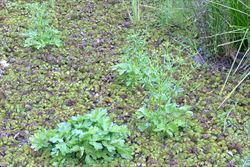
infestation (Photo: Sheldon Navie)
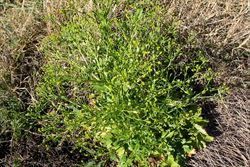
habit (Photo: Sheldon Navie)
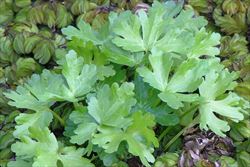
lobed lower leaves (Photo: Sheldon Navie)
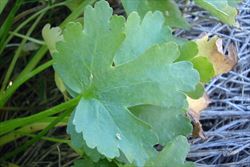
close-up of three-lobed lower leaves, which are borne on long stalks (Photo: Sheldon Navie)
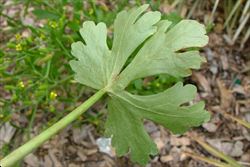
close-up of underside of lower leaf (Photo: Sheldon Navie)
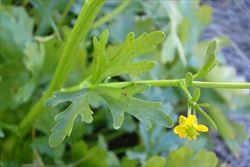
stem with more deeply-divided upper leaves, which are almost stalkless (Photo: Sheldon Navie)

close-up of flowers (Photo: Trevor James)
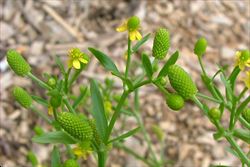
immature fruit and narrow uppermost leaves (Photo: Sheldon Navie)
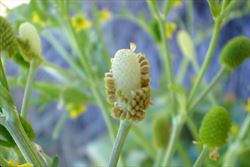
close-up of mature fruit (Photo: Sheldon Navie)
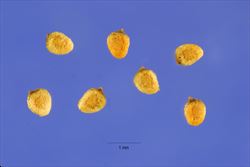
close-up of seeds (Photo: Steve Hurst at USDA PLANTS Database)

seedling (Photo: Sheldon Navie)
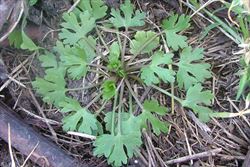
young plant with a rosette of leaves (Photo: Sheldon Navie)
Scientific Name
Ranunculus sceleratus L. subsp. sceleratus
Synonyms
Ranunculus sceleratus L.
Family
Ranunculaceae
Common Names
blister buttercup, celery buttercup, celery leaved crowfoot, celery ranunculus, celery-leaf buttercup, celeryleaf buttercup, celery-leaf crowfoot, celery-leaf crowsfoot, celery-leaved buttercup, cursed buttercup, cursed crowfoot, cursed crowsfoot, marsh crowfoot, poison buttercup
Origin
The exact range of this species is obcure, but it is thought to be native to northern Africa (i.e. northern Algeria, northern Egypt, Morocco and Tunisia), Europe, western and northern Asia (i.e. Afghanistan, Iran, Iraq, Lebanon, Syria, Turkey, Armenia, Azerbaijan, Georgia, Russia, Kazakhstan, Kyrgyzstan, Tajikistan, Turkmenistan, Uzbekistan, Mongolia, China and Japan), the Indian Sub-continent (i.e. Bhutan, northern India, Nepal and Pakistan) and North America (i.e. most of the USA).
Naturalised Distribution
Widely naturalised in southern and eastern Australia (i.e. in south-eastern Queensland, many parts of southern and eastern New South Wales, the ACT, many parts of Victoria and south-eastern South Australia). Was also sparingly naturalised in Tasmania, but has not been recorded there for more than 100 years.
Notes
Celery-leaved buttercup (Ranunculus sceleratus subsp. sceleratus) generally grows in moist or muddy sites (e.g. along drainage lines, on riverbanks, in swamps and marshes, in moist low-lying areas and in poorly drianed pastures) and can displace native species from such areas. It is listed as an environmental weed in the Goulburn Broken Catchment in Victoria and has been recorded in conservation areas in this state (e.g. Barkindji Biosphere Reserve and Finns Reserve).

